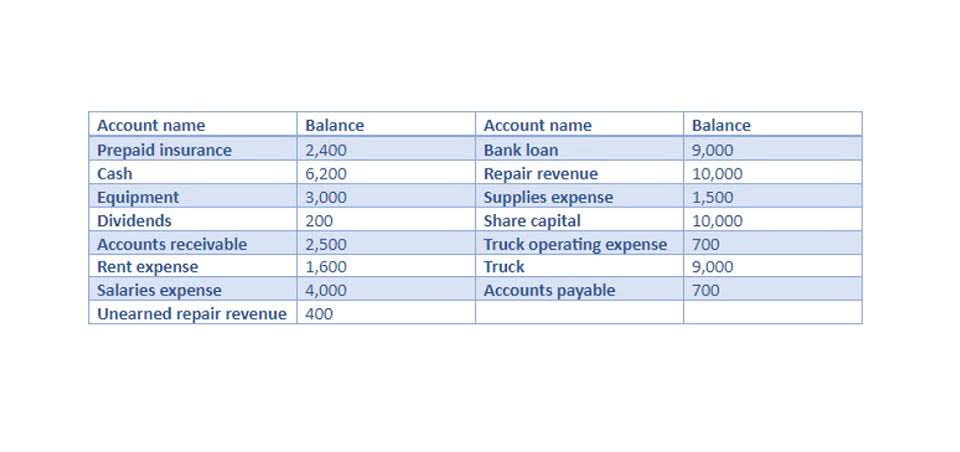Calculating the Present and Future Value of an Annuity

A future value factor of 1.0 means the value of the series will be equal to the value today. Calculations #5 through #8 illustrate how to determine the number of time periods (n). It is impossible to compare the value or potential purchasing power of the future dollar to today’s dollar; they exist in different times and have different values. Present value (PV) considers the future value of an investment expressed in today’s value. This allows a company to see if the investment’s initial cost is more or less than the future return.

Future Value Factors
We would assume that you would receive the first annual lottery check of $120,000 immediately, not a year from now. In summary, whether calculating future value (covered in the next section) or present value of an annuity due, the one-year lag is eliminated, and we begin immediately. Now, before going on to the present value table, we have to understand the meaning of present value. Present value (PV) is the value today of a payment or a stream of payments to be received in the future. As money can be invested to generate returns, its value is time-dependent, meaning $1 received today is worth more than $1 received tomorrow (because it could have been used to invest or pay off debt).

Calculating the Future Value of an Annuity
Using the FVIF and the future value formula, we can calculate that the future value of Paul’s HOA Accounting deposit at the end of 2 years would be $1,123.60. Again, the sum of the answers to these two equations will be the future value on December 31, 2027. The future value of multiple amounts is determined by calculating, and then adding together, the future value for each single amount. The formula shows that the present value of $10,000 will grow to the FV of $10,800 at the end of one year when interest of 8% is earned and the interest is added to the account only at the end of the year. The following timelines will allow us to visualize the compounding of interest and its effect on each account’s ending balance.
2 Time Value of Money (TVM) Basics
- The mathematics for calculating the future value of a single amount of $10,000 earning 8% per year compounded quarterly for two years appears in the left column of the following table.
- Stay tuned to gain valuable insights for maximizing your investment potential and mastering present value calculations.
- At StudySmarter, we have created a learning platform that serves millions of students.
- As discussed previously, annuities are a series of equal payments made over time, and ordinary annuities pay the equal installment at the end of each payment period within the series.
- Now you can compare like numbers, and the $787,000 cash lump sum is worth more than the discounted future payments.
For example, continuous compounding is used in the Black-Scholes option pricing model, which assumes a continuously compounding risk-free rate. As shown in the screenshot above, Excel’s EXP function can help when calculating the future value of a continuously compounded investment. In this case, we included an additional payment of $100 made in each of the two years. By omitting the optional argument “Type,” the FV function assumes the payments are made at the end of the year. Again, we made the payment a negative number, as well as the present value. Compound interest is the process where an investment earns interest not only on the principal but also on the interest that accumulates over previous periods.
Understanding Present Value
- Net present value (NPV), bond yields, and pension obligations are just a few examples where these concepts play vital roles.
- The superscript N does not apply because it represents 1, for one additional period, and the power of 1 can be ignored.
- Inflation can be incorporated as part of the discount rate calculation, which takes into account the expected rate of price increases during the time period.
- For instance, if you buy a stock today for $100 that awards a 2% dividend each year, you can calculate the future value of that stock.
- It provides valuable insights into the true worth of future cash flows and helps determine the profitability of various investment opportunities.
Notice that the only difference between the two calculations is the exponent N, representing the number of periods. Since the difference is simply one additional period of time, we can adjust for this the future value of 1 factor will always be easily by taking the formula for an ordinary annuity and multiplying by one additional period. Recall from Time Value of Money I that the formula for compounding is (1 + i)N, where i is the interest rate and N is the number of periods.

Flashcards in Future Value of an Annuity

However, for additional investments (or even withdrawals), the formula needs to be adjusted to handle these cash flows. The discount rate or the interest rate, onthe other hand, refers to the interestrate or the rate of return that an investment can earn in a particular timeperiod. It is called so because it represents the rate at which the futurevalue of money is ‘discounted’ to arrive at its present value. Present value factor is often available in the form of a table for ease of reference. This table usually provides the present value factors for various time periods and discount rate combinations.
- It helps investors determine whether an investment is worth pursuing based on its potential future cash flows and the cost of waiting for those funds to be realized.
- The concept of compound interest dates back to ancient times, with early applications in Babylonian and Roman financial transactions.
- Some of the most common interest calculations are daily, monthly, quarterly, or annually.
- This section explores the distinctions between present value and future value, their roles in valuing cash flows, and how they’re used together in financial calculations.
- For this reason, while using FVIF it is important to consider long-term investments.
- To calculate present value, investors discount future cash flows by applying a discount rate, which reflects the expected return from an investment or the risk-free rate based on market conditions.
Department of Treasury bond website, to estimate the growth and future value of savings bonds. Interest rate – Generally speaking, the higher the interest rate of an investment, the higher will be its future value. Time https://principles-lighting.com/cpa-or-enrolled-agent-salary-in-india-2/ period – The longer the duration of an investment, the higher will be its future value. For this reason, while using FVIF it is important to consider long-term investments.
